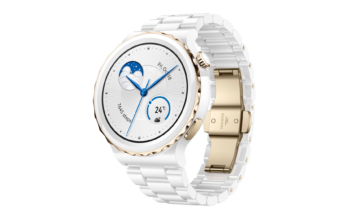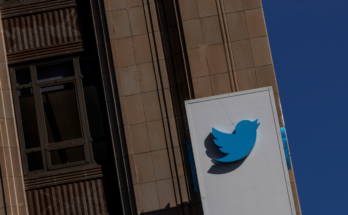My mother’s dental history reads like a horror novel: multiple fillings, root canals, implants, jaw surgeries, gum tissue grafts, and full veneers. Emotional costs aside, the financial investment has been massive. As a result, she drilled the importance of twice-daily brushing and flossing into me from a young age. It’s clearly paid off: I’ve never even had a cavity.
So imagine my surprise when, a few years ago, my gums began to recede. Gum recession is just what it sounds like: the pink, spongy tissue (known as gingiva) that covers and protects the roots of our teeth shrinks, increasingly exposing them to harmful bacteria. Gum recession not only has cosmetic consequences—it’s the root of the “long in the tooth” idiom usedto indicate someone looks old—but can also increase plaque buildup, tooth erosion, and sensitivity.
According to a 2003 study, nearly half of all adults worldwide aged 18-64 have some degree of gum recession (that number jumps up to 88 percent for adults 65 and over). In the U.S., 47 percent of adults 30 and over have some form of gum disease (also called periodontitis), which causes not just gum recession but swollen and tender gum tissue, bleeding in the mouth, pain while chewing, and abscesses.
But how on earth could gum recession happen to an A+ brusher and flosser like me, who rarely skips a cleaning? When I asked my dentist, I got a surprising response: “Do you brush really hard?”
I’d never thought about it before. When I Googled “brushing too hard,” however, a bevy of academic studies, individual dental practice sites, and name-brand toothbrush and toothpaste company blogs popped up, all warning me about the dangers of too-powerful brushing. Many offered the same tips my dentist had given me: use a soft-bristled brush and to hold it either using only two or three fingers or with my non-dominant hand. After a couple weeks, however, I began to worry if I was swinging to the other side of the pendulum: brushing too softly to clean my teeth properly.
To determine if years of over brushing were sandblasting my gums into oblivion, I spoke to Dr. James G. Wilson, president of the American Academy of Periodontology (AAP)—periodontics being the branch of dentistry that focuses on treating the structures around our teeth, oral inflammation, and performing implants—and discovered the short answer is, maybe.
As Dr. Wilson emphasized, however, “there’s a fine line between brushing too hard and not removing the bacteria you need to remove, which makes you more susceptible to cavities [and] to gum disease.” In other words: brushing smarter, not necessarily softer, is the goal.
Brushing too hard is only one of many causes of tooth and gum problems
Many factors contribute to the wear and tear of our teeth and gums besides over-brushing: genetics, diet, access to care, and even orthodontic treatments. When I shared my mother’s dental history, Dr. Wilson mentioned that my gum recession might be due primarily to inheriting weaker gum tissue (called gingiva), a smaller jaw, and even my thinner jawbone—all of which can increase the likelihood of gum recession and cavities. Moreover, my teenage braces, while straightening my smile, may also have pushed some teeth beyond the limits of the bone.
As Dr. Wilson told me, “Over aggressive brushing certainly can cause some damage, [but] I personally think it is blamed way too much.” If you or your parents have had lots of issues with your teeth, you might want to ask your dentist if your x-rays and examinations show thinner bones and weaker gum tissue. If they do, you should definitely take over-brushing more seriously, since it is one of the few things you can control when it comes to staving off gum recession, gum disease, and tooth decay.
Soft-bristled toothbrushes will remove the most plaque—but can also cause more damage
Soft-bristled toothbrushes aren’t best because they’re gentle on teeth and gums; they’re recommended because their greater flexibility allows them to cover more surface area and retain more toothpaste. From Dr. Wilson’s periodontist perspective, this flexibility also means they get to bacteria under the gum line better than stiffer bristles.
Their ability to retain more toothpaste, however, is one reason why you might want to pay attention to the abrasiveness of your brand at home. Some researchers warn that more abrasive toothpastes can erode enamel and the underlying tissue (called dentin) that, when exposed, lead to increased sensitivity. Other experts insist that all available toothpastes are safe. (Look for the ADA Seal of Acceptance if you want to be sure your brand has been thoroughly tested.) You want at least some abrasiveness in your toothpaste to remove plaque, unless your teeth already have significant wear. Whitening toothpastes tend to have the highest levels of abrasiveness (on a safety scale of 0-250); you can find out how abrasive your current brand is here.
Keep in mind, too, that abrasion, which is wear-and-tear caused by foreign materials like brushes and toothpaste, is just one of three ways we lose our enamel. Attrition occurs when our teeth rub against each other, primarily through clenching and grinding, and erosion is caused by dietary and environmental factors, such as consuming acidic foods and beverages, exposure to our saliva and stomach acid, and contamination from polluted workplaces (like mines). If you love citrus fruits and juices or drink sodas daily, consider cutting down or, at the very least, timing your brushing to limit potential erosion.
Also, don’t forget to replace your brushes every three to four months, as old and worn out brushes remove less plaque and can harbor bacteria and viruses.
Electric toothbrushes have pressure sensors that tell you if you’re brushing too hard
“I’m a big proponent of electric toothbrushes,” Dr. Wilson told me, “[because] if you properly use an electric toothbrush, you don’t use a scrubbing motion with it.”All you have to do is hold the brush steady and guide it along your teeth and gum line, letting the brush do the rest of the work.
Even if you scrub, many electric brushes now come with pressure sensors that light up or make noise if you’re pressing too hard. (You can find this feature at all price points, from $50 Oral-B and Sonicare brushes, to the $250 Sonicare DiamondClean brush with chic chargers and multiple settings.) The more expensive Oral-B 7000 ($130 on sale) and 8000 ($140 on sale), as well as the $95 Quip smart brush even connect to apps that show areas you’ve missed and track your brushing habits.
While these brushes cost more than manual brushes, they also remove more plaque. As Dr. Wilson said, “An electric toothbrush is probably a very minor investment versus the cost of some of the dental care.” Make sure you choose soft bristled heads and, as with manual brushes, replace the every three or four months.
Bring your toothbrush to your next cleaning
Since 2013, the ADA’s position is that the number of yearly visits should be tailored to patients’ individual needs and risk factors. Still, “361 days out of the year, this is your responsibility,” Dr. Wilson said. (His patients often have advanced gum disease and require quarterly cleanings.) “We have to be your coaches on how to do a good job on those 361 days.”
To get effective coaching, we need to show our stuff. (It’s the difference between watching a champion weightlifter demonstrate a snatch and then trying to replicate it alone at home, rather than showing the weightlifter your technique and asking them for tips.) The next time you go for a cleaning, bring in your toothbrush, brush in front of your hygienist and dentist, and ask them for feedback. Dr. Wilson stressed this last part, as many dentists and hygienists hesitate to speak up at the risk of sounding overbearing or badgering. “As soon as you ask,” he said, you’ve given [us] permission to critique you.”
While they’ll start by looking at your brush—if the bristles are frayed and splayed, for example, you’re likely brushing so hard, and with such a tired brush, that you’re actually removing less plaque—the best feedback comes from showing them your brushing techniques in action.
Don’t delay routine dental visits
In August 2020, five months into the pandemic, the World Health Organization (WHO) released a statement advising people to postpone routine, preventative dental care like cleanings to reduce community spread. (The ADA “respectfully yet strongly” disagreed, insisting that “dentistry is essential health care.”)
In fact, dental practices in the U.S. and elsewhere underwent a PPE revolution during the mid-1980’s in response to HIV/AIDS. While Dr. Wilson remembers a time when his dentists didn’t even put on gloves to examine his mouth, those days are long gone. “Going to your dentist is a very safe thing to do,” he said, and the available evidence—however scant—appears to back him up.
Putting off preventative care, moreover, grows holes in our teeth and, ultimately, our pockets. Having seen my mom go through so many expensive and painful procedures, I made sure that one of my few excursions out into the world after lockdown was a cleaning, even though I’m immunocompromised and therefore at higher risk of serious illness and death from COVID-19.
That said, many Americans often skipped preventative dental visits even before the pandemic, perhaps due to lack of access to affordable care, relying instead on fluoridated community water and school sealant programs that prevent cavities. But rates of untreated cavities and gum disease are as much as two to three times higher among Black, brown, and low-income children and adults. While advocating for better dental insurance for all Americans is the ultimate solution, the expense of both routine and urgent dental care makes it all the more important to brush effectively at home. Having good tools and techniques can help, even if certain factors like genetics and the dental-industrial complex are currently beyond our control.
I, for one, can’t wait to take my new soft-bristled, pressure-sensored electric toothbrush with me to my next cleaning to ask for some feedback on my technique. I want to keep my cavity scorecard at zero and make sure I’m massaging those gums with the perfect amount of pressure.



